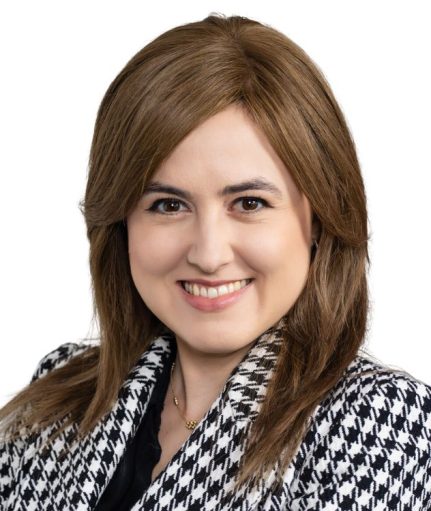The recent amendments, via Law No. 112 of 8 July 2020, made to Law No. 84/1998 on trademarks and geographical indications (the Trademark Law) [1] set forth new rights accruing from the protection conferred by the registration of trademarks, but new obligations for right holders as well.
The hereby paper explores the title holders’ rights and obligations regarding the revision of their trademark portfolios from the perspective of the classes corresponding to the “Nice Classification” indicated in their registration application, as well as for ensuring the clarity and precision of the designated goods and services.
For each right holder of trademarks registered with the State Office for Inventions and Trademarks (OSIM), the process of reviewing its trademark portfolio is aimed at filing, if the case, no later than 30.09.2020, of a statement observing the new amendments made to the Trademark Law.
- The ambit of the obligations and applicable deadlines
The general legal framework
It is well acknowledged that, for the registration of a trademark with OSIM, a standard application must be submitted, which contains, inter alia, the field ‘List of goods and/or services classified according to the Nice Classification for which the trademark will be used’. The purpose of this list is to confine the limits within which exclusive protection in relation to third parties is granted to the future right holder.
Said list must be determined under precise terms, so that the name of the goods and/ or services allows classification of each such good and/ or service in one class of the Nice Classification only.
The recently added legal provisions set forth, separately, the obligations of pre-existing trademarks holders and the obligations of the applicants for future trademarks, respectively.
What are the obligations of pre-existing trademark holders? Specifically, the holders of trademarks registered prior to the entry into force of these amendments should perform an examination of their trademark portfolios with respect to the Nice classes designated for their registration.
If a trademark had been registered in relation to the entire title of a class insofar as the Nice Classification is concerned, its right holder is entitled to state that its intention at the time of filing the trademark application was to seek the protection of certain goods or services, outside of those covered by the ad litteram meaning of the title of said class. That is, however, assuming the goods or services thus indicated are included in the detailed alphabetical list of that class. To such end, the edition of the Nice Classification in force at the date of filing the trademark registration application shall be applicable.
What is the deadline for submission and what does the statement entail? The statement will be submitted to OSIM no later than 30 September 2020. It will clearly and precisely specify the products and/ or services covered by the initial intention of the right holder, other than those covered by the literal meaning of the indications provided in the class title. Subsequently, OSIM will perform the corresponding changes in the Trademark Register.
Naturally, the mere indication of some goods and services within the statement does not automatically provide absolute protection, in the absence of an effective use of the trademarks concerning them. The legal provisions regarding cancellation for non-use, as well as the option to request proof of effective use from the right holder invoking earlier rights in a potential dispute (i.e., annulment claim, opposition) remain applicable.
What are the consequences of not filing the statement on time? In the case of trademarks for which no statement is filed until the aforementioned deadline, it shall be considered that – upon expiry of the deadline – they merely designate the goods and/ or services covered by the literal meaning of the indications within the title of that respective class. As a result, right holders may find themselves in the situation of a significant de facto confinement of the ambit of protection of their trademarks.
What are the obligations of the applicants for future trademarks? Holders of applications to be submitted for trademarks registration after the entry into force of these amendments must ensure that they specify with enough clarity and precision the goods and services for which they seek trademark protection, in order to enable the competent authorities (e.g., OSIM, customs offices) and economic operators to determine the extent of the requested protection on the basis of the registration application’s contents alone, without any further endeavours. The use of generic terms or general indications within the titles of the classes in the Nice Classification will be construed as including all products or services covered by the literal meaning of such indication or term.
- The Nice Classification
What does the Nice Classification entail? The classification established by the ‘Nice Agreement Concerning the International Classification of Goods and Services for the Purposes of the Registration of Marks’ (the Nice Classification), an international convention which Romania ratified by Law No. 3/1998, constitutes a system for the management of goods and services used in trademark registration applications.
In summary, each class comprises (i) a class title, which provides general information about the type of goods or services it contains (e.g., Class 38 – Telecommunications services) and (ii) a non-exhaustive set of terms within that class which allows a better definition of the products or services protected by the registration of trademarks. The list being not-exhaustive, the holders have the possibility – theoretical, yet unrecommended – to also include terms that are not expressly mentioned in the description of a certain class.
Basically, the Nice Classification allows a clearer delimitation of the ambit of protection for a registered trademark, by referring to the designated products and/or services. The newly introduced legal provisions are aimed at ensuring even better prospects of accomplishing this goal.
- The context in which the new regulations are being introduced
What is the underlying reasoning of the new obligations? According to the Explanatory Memorandum of Law No. 112/2020, the newly established obligations for right holders are meant to clarify the extent (and limits) of trademark protection.
Such objective was set in light of transposition of the Directive (EU) 2015/2436 of the European Parliament and of the Council of 16 December 2015 to approximate the laws of the Member States relating to trade marks[2], in line with those laid down in the ECJ Decision C‑307/10 (IP-Translator). Therefore, a certain convergence with regard to these obligations at EU Member State level shall exist.
- Final remarks
Within two months from the publication on 9 July 2020 in the Official Gazette of Romania of Law No. 112/20202, the Implementation Regulation[3] of the Trademark Law shall be amended accordingly.
In all likelihood, such amendment of the above Implementation Regulation will be of interest from the perspective of any further clarifications on the obligations discussed in this paper.
[1] Published in the Official Gazette of Romania, Part I, No. 603 of 9 July 2020.
[2] Relevant in respect of those discussed are Article 39, as well as para. 37 of the Preamble.
[3] Regulation on the implementation of Law No. 84/1998 on trademarks and geographical indications, approved by Government Decision No. 1134/2010, published in the Official Gazette of Romania, Part I, No. 809 of 3 December 2010.
*This ePublication is provided by Radu Taracila Padurari Retevoescu SCA and is for information purposes only. It does not constitute legal advice or an offer for legal services. The distribution of this document does not create an attorney−client relationship. If you require advice on any of the matters raised in this document, please call your usual contact at Radu Taracila Padurari Retevoescu SCA at +40 31 405 7777.



